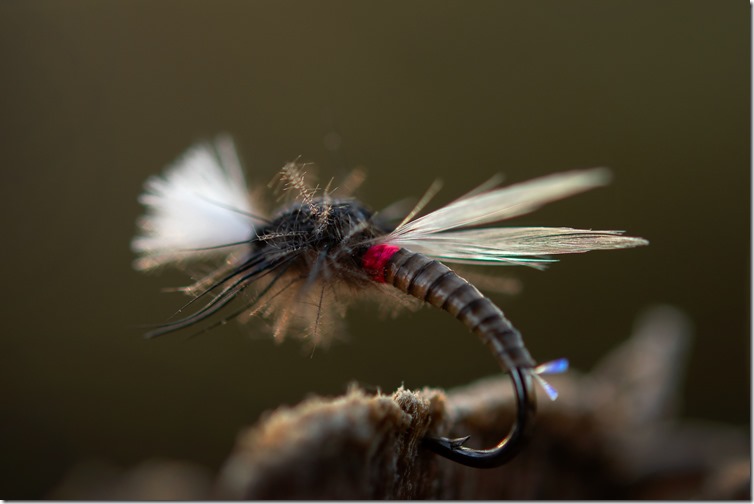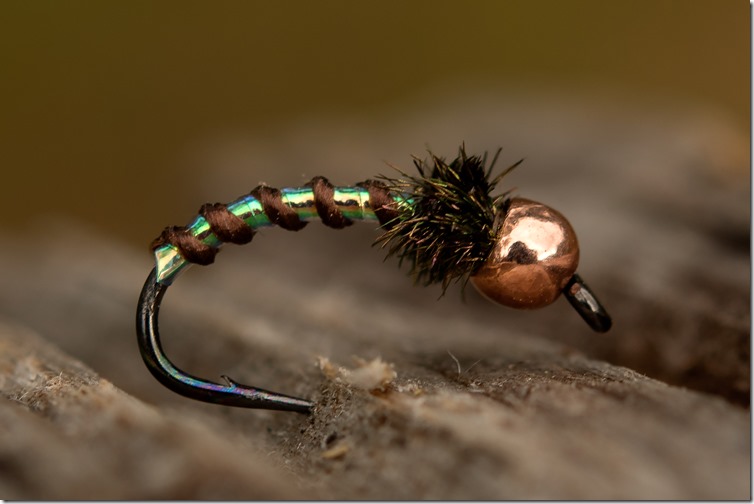The word midge has a duality of meanings – at least for fly tiers and fly fishermen. First of all, it can mean: a very small fly, natural or artificial. So any bug tied on a fly hook size 18 or smaller is a candidate to the midge title, even though it may represent a mayfly or even a sow bug. Very confusing.
But for this blog, let’s focus on the real midges. I non scientific terms they are mosquitoes, phantom midges and other two-winged insects. Some are bloodsuckers and some are very friendly and just love dancing over the lake in a glorious sunset.
Midges are true bugs, meaning they have three stages, larva, pupa and adult flying insect. They aren’t picky about their habitat, or more correct: there’s some kind of midges in all types of water: stillwaters, ponds, tailwaters, spring creeks, freestones rivers you name it… they live there. They are pretty tolerant of degraded water conditions and muddy bottom areas.
Plentiful and active in winter
Most important for today’s mini theme though is: They are extremely plentiful in most waters during the winter, since that is where midges survive in winter. Lakes and ponds can be teeming with midge larvae in the peak of winter.
These larvae can vary in size from say a size 8 hook all the way down to size 32 and are found in every imaginable color – with black, red, olive, brown and transparent being most common.
Even in the mid of winter some midges might hatch on warm days. In preparation for this the go through the larva stage, where you can see the development of a pronounced thorax including the wing sacks. Hatching of midges during winter usually happens when the sun warms the water in the morning, and again late in the day, when the waters reach the highest temperature.
Massive hatches during spring
When spring arrives midges get even more important, with heavy hatches that can totally dominate the activity on many lakes and ponds.
So even if you aren’t into winter fishing, you need midge flies… and lots of them. In our Freshwater Series, we have a bunch of specialized hooks that are designed for midges in all stages of their life circle – and will enable you to fish the water column from top to bottom. And on every FW hook, you have a barbed and a barbless option. Check them out right here.
Photo and tying credits
Mosquito Larvae (photo Michael Jensen)
Straggle String tied by Roy Ole Jakobsen (photo Morten Valeur)
Crawling Midge tied by Roy Ole Jakobsen (photo Morten Valeur)
Pearl Bodied Copper Head tied by Håkan Karsnäser (photo Morten Valeur)
And it´s video time
Here are a bunch of new videos, with some of our friends who also like midges. You are gonna need some of these for winter and spring. Enjoy!
First one is the Blue Steel Chromie, tied by Jordan Oelrich from the Interior Fly Fishing Co. in Kamloops, British Columbia. Jordan ties this super simple fly on an Ahrex FW521 #12 – and does it in one minute (on the video at least ;0)
Our Swedish friend Jon (Troutcastz) Hansson ties his Hemo Midge, which represent a hatching insect – the adult of the bloodworm. He uses an Ahrex FW511 size 16-20 for this one.
And from Germany this new video from ADH Fishing features our brand new Ahrex FW551 Mini Jig Barbless hook. The fly tier is Alexander Keus and the fly is a UV2 & Glo Brite Pheasant Tail Jig.
Finally, my own Bloodworm Larva. This is a very simple and uncomplicated tie, but it has fooled a lot of trout, grayling and some really large whitefish. I feel it is important to thoroughly brush out the dubbing, to make the natural fibres glow. Tied on an Ahrex FW560 Traditional Nymph #10 but would work fabulous on the Ahrex FW550 and FW551 Mini Jig hooks as well.
Have a nice weekend :0)
Michael




